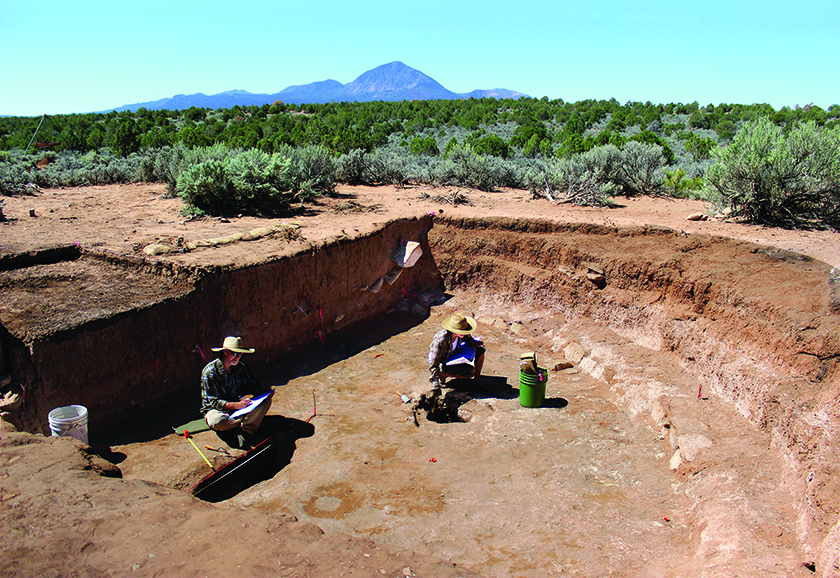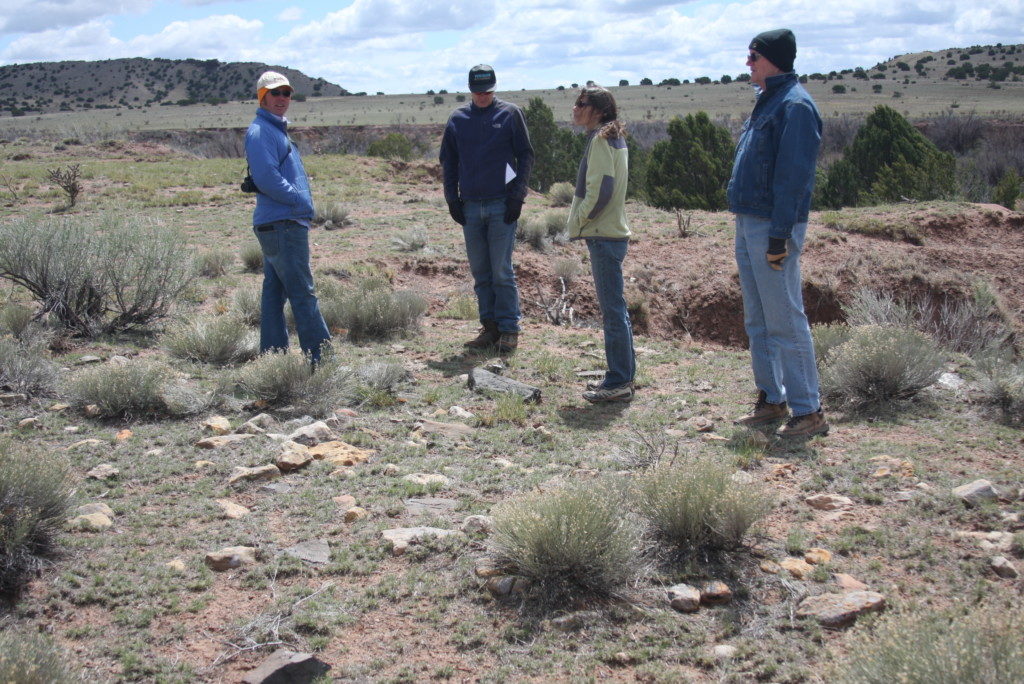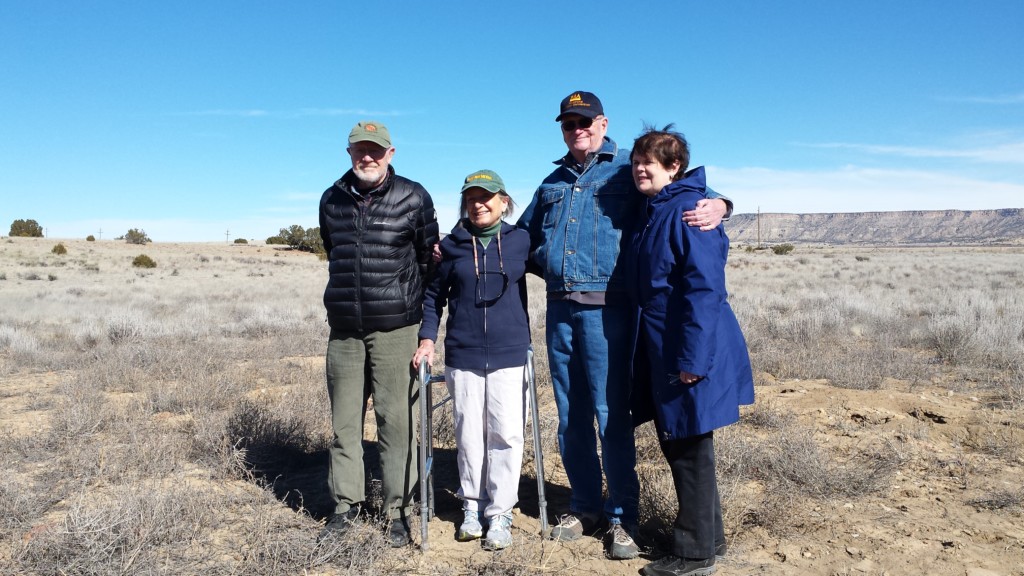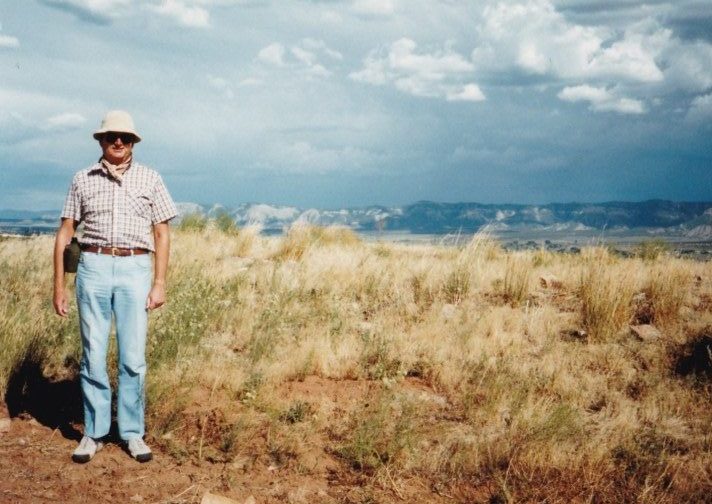I was first exposed to Native Americans and ancient cultures in grade school during the early days of black and white television, when the shows were mostly about cowboys and Indians. And, my sixth grade teacher, fresh from WW II and the G.I. Bill’s college opportunities, included ancient Greece and Rome in history class, probably an experience that many of today’s children don’t have. As a prolific reader, I supplemented this exposure with whatever was available in school libraries.
At the University of Illinois, College of Liberal Arts and Culture, as a freshman, my intention was to become an archaeologist, until I noticed that there were no jobs for anthropology graduates. Since work and compensation would eventually become a necessity, my major shifted to geology as a sophomore, history as a junior, a B.A in economics, and an M.S. in finance, followed by an entry level job at the First National Bank of Chicago as a security analyst. Back then U. of I. tuition was only $100 a semester, and since I worked at the Illinois State Geological Survey for 24 hours a week for almost three years during my college time, I could manage the expense.
Economics and finance are actually fascinating subjects which usually explain most world affairs, if taught by a non-Keynesian. My 29 year career with Kemper Financial Services (KFS), a large firm in Chicago, included devising and adopting newer tools of security analysis, such as cash flow forecasting, present value, and querying corporate financial officers; and development of new products such as high-yield bond, option-income, alternative money market mutual funds, and international investing, as, in succession, analyst, Research Director, Chief Investment Officer, director of several company subsidiaries and President of Kemper Murray Johnstone International. In 1996 and 1997, I taught investments at Northwestern University’s University College.
Trying to understand U.S. and world economics and finance, and make rewarding investment decisions is difficult but extremely interesting. But forget the usual definition of economics as the allocation of scarce resources. Economics is the social science (an interesting way of saying that results will vary) of incentives and productivity, and their results. Recently the new term “unintended consequences” has helped to focus on the realities of any action or legislation which ignores economic principles. Basic principles are easy to understand; when you increase the price of a product or service, usually the demand for it will fall (read entry level jobs); or increase the demand for health care but don’t address supply and keep prices low (read shortage of health care providers).
I remember the continuous economic, profit, inflation, currency and interest rate forecasting necessary for sound investment decisions and the stress from interjection of unforeseen events. I remember an urgent telephone call during a Christmas party when my futures and options manager told me “the Japanese market was crashing” and then the time I was in Australia giving a speech to brokers on the markets, when the television announcer said “the world is different today. The New York market has crashed”(Oct. 1987). Then he went to commercial as I pondered, what he meant by “crashed.”
How does this relate to my involvement with The Archaeological Conservancy? Archaeology is, simply put, the physical record of thousands of economic and social experiments, from the size of a single pueblo to empires. And, we get to see if the experiment thrived or failed.
As archaeologist Scott Ortman wrote, “…shouldn’t we …have a goal of learning what works and what doesn’t, for the benefit of all? One of The Conservancy’s primary purposes is to permanently save important archaeological sites for future research.

Since 2011, researchers with Crow Canyon Archaeological Center have been investigating Dillard, an ancient community near Cortez, Colorado. Courtesy Crow Canyon Archaeological Center.
In 1984, my wife Judy spotted an ad in the Smithsonian magazine for a week excavating an ancestral Puebloan site near Cortez, Colorado, under the professional guidance and scrutiny of Crow Canyon Archaeological Center and their esteemed staff. Since I could use a break from the world of investments and renew my interest in archaeology, I signed up and excavated at two sites over three years; then joined their Board for fourteen more.
By 2004, I had retired and was anxious to spend more time delving into archaeology- this time without having to sit in the dirt. The Conservancy provided me with the opportunity to help prepare site management plans for newly acquired sites. These plans involve gathering all interested parties; archaeologists, state officials, local interested individuals, neighbors, and site stewards, to formulate an ongoing plan for preservation, educational opportunities and research activities for the site. I have participated and mostly written some 25-30 site management plans since. Apparently, The Conservancy was pleased, and I was invited to join the Board of Directors in 2004 and became Chair in 2007.

Gordon Wilson, TAC Chairman of the Board (right); Tamara Stewart, SW Special Projects Coorindator, and volunteers surveying a ranch in the Galisteo Basin about 6 years ago. Photo: TAC
I have always been impressed with the tight financial management of the Conservancy. With annual donations which rarely exceed $4 million, our roster of saved sites grows by 15 to 20 new additions per year, now total over 505 sites in 45 states. Some important site acquisitions are projects requiring effort over many years. Others are the result of emergency auctions to save an important site. Expenses are carefully controlled.
Years ago, I was traveling with the Southwest Regional Director, Jim Walker, to do a site management plan outside of El Paso. I always pay my own way. We flew into El Paso, rented a car for $19. I don’t remember getting lunch. About four that afternoon, we were done meeting and heading back to the airport when Jim said he had forgotten to fill the gas tank back up. So we zipped past the airport to find a gas station. We were running late for our flight, but Jim went right by the first two stations to fill up for 3 cents a gallon less at the third station. On the way back, I could not resist, so I asked Jim if I should write a letter to Mark Michel commending him for saving The Conservancy fifteen cents. Fortunately he smiled. This frugality permeates all activities. Members of The Conservancy and donors can be assured that every penny is carefully considered.
Looking forward, our regional offices continue to be very busy with the business of “Saving the Past for the Future”, the Conservancy is running on all cylinders and our mission is only constrained by our funding- The need is always there!
~ By Gordon Wilson
Gordon P. Wilson (Chairman of the Board) is a retired investment and mutual fund manager. He served as chief investment officer and president of Kemper-Murray Johnstone International in Chicago. Wilson is a former member of the board of directors of the Crow Canyon Archaeological Center and Futures for Children. He holds a Masters degree in finance from the University of Illinois and lives in Santa Fe.





